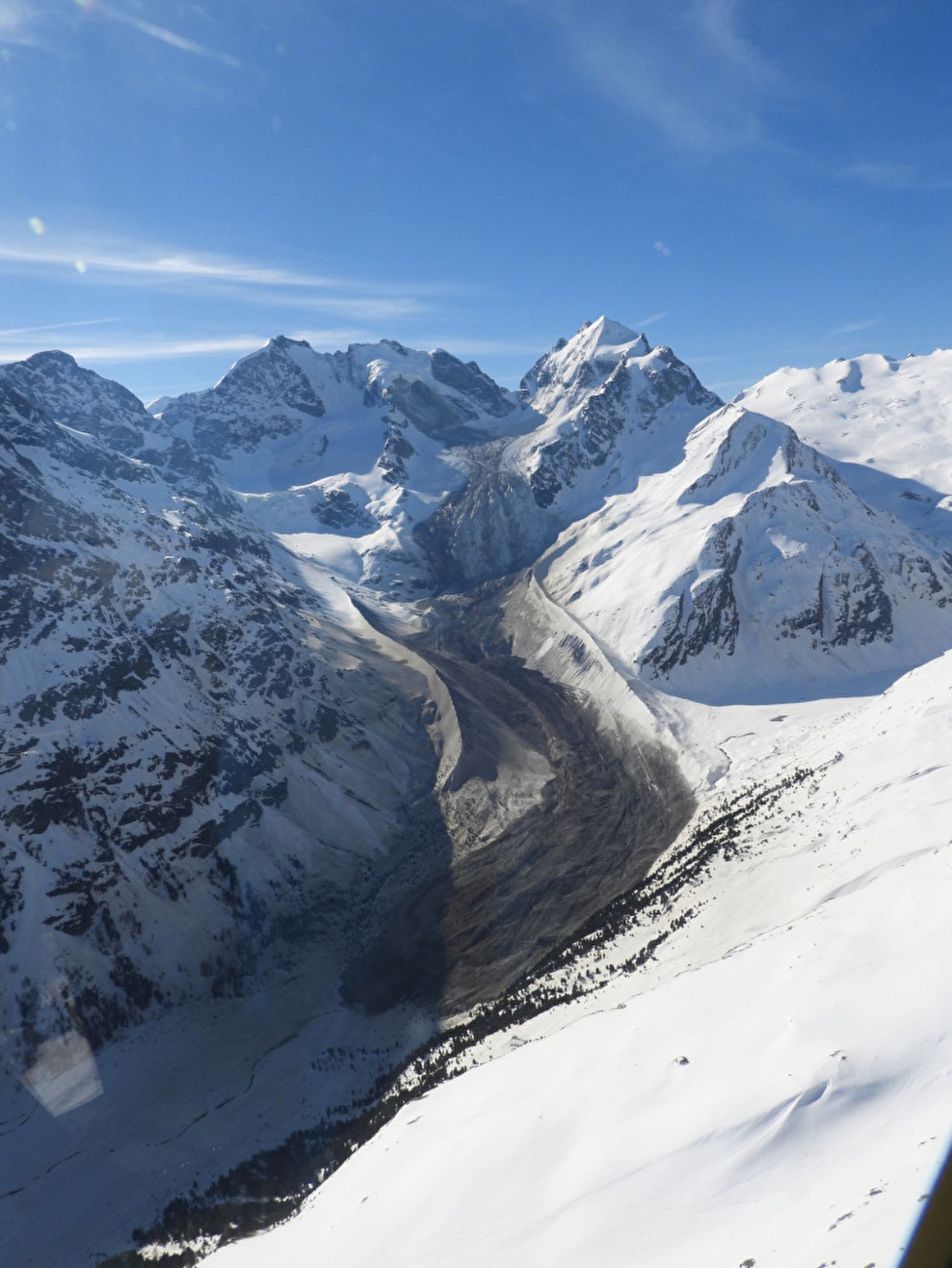Become a member
The core of ecorisQ is made of its members. By joining ecorisQ you will expand your professional network and profit from transparent tools in the field of natural hazard risks. Being an ecorisQ member demonstrates that you are willing to increase the transparancy and reproducibility of natural hazard analyses and that you promote sustainable protection against natural hazards.
News
Impressive Bergsturz in Switzerland
- Details

On Sunday 14 April 2024, a Bergsturz with more than 1 million m3 occurred on the north face of Piz Scerscen (Switzerland). Although this event occurred spontaneously after several days with high temperatures, nobody got hurt. Since a lot of water has been observed in the failure zone, melting of snow and ice very probably played an important role. The runout distance was 5.4 km, which coressponds to a energy line angle of 15° (following the travel path) and 16° (following a straight line) - typical values for such events. An impressive movie showing the release, transit and deposit area can be found here (commented in the beautiful Rumantsch - the fourth Swiss national language).
With our new rockfall runout simulation tool named RockavELA, we try to predict the propagation of such events.
Two new tools
- Details

We launched bèta versions of two news tools, one for shallow landslide hazard assemsment called SlideforMAP and the second for streambank erosion called BankforMAP. SlideforMAP is a probabilistic model to assess shallow landslide probability on a regional scale with an explicit focus on vegetation scenarios. BankforMAP is a two-dimensional model that computes the probability of streambank erosion at the catchment scale due to a rainfall event and can also calculate transport and deposition of large wood along streams.
New version SlideforNET 2023
- Details

During the last years we were working on the improvement of the online tool “SlideforNET”, now available here. The tool supports specialists in the assessment of hazards due to shallow landslides on vegetated slope and in the quantitative evaluation of bioengineering measures following normed approaches such as the use of reliability index or partial security factors (including the one for root reinforcement!!). Moreover, the new table “Stand diagram” supports foresters in the decision of interventions in protection forests. The major technical improvements consist in the implementation of new root reinforcement data, improved stability calculations described in van Zadelhoff et al. (2022), based on the results of Cohen and Schwarz (2017) and Schwarz et al. (2015).
